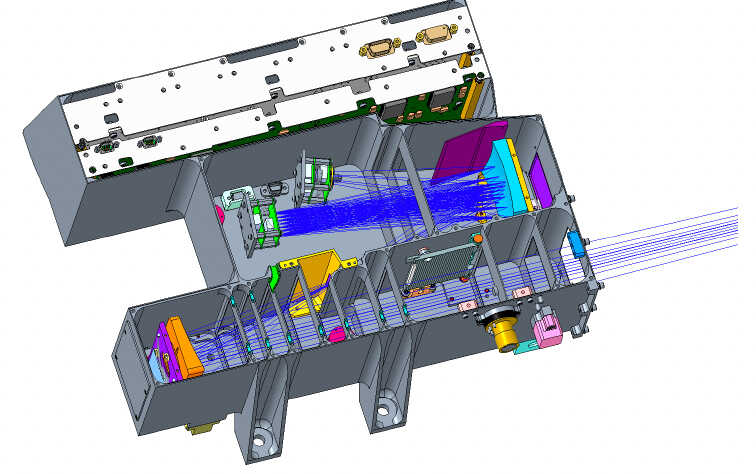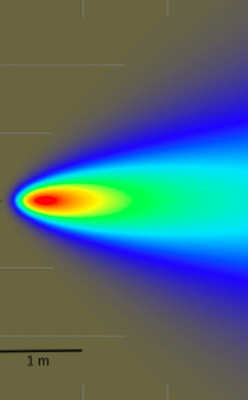Background
Southwest Research Institute has been a leader in ultraviolet spectrometer (UVS) instrumentation for the exploration of our solar system, sending highly capable UVS instruments on missions to the moon (Lunar Reconnaissance Orbiter’s Lyman-Alpha Mapping Project (LRO-LAMP), to a comet (Rosetta-Alice), to Pluto and the Kuiper Belt (New Horizons-Alice), to Jupiter (Juno-UVS), and soon to satellites in the Jupiter system (Europa Clipper UVS and JUICE-UVS).
However, NASA has been increasing the number of more focused, low-cost missions, particularly for lunar exploration. Therefore, a lower-cost, more specialized UV instrument is necessary to be competitive for such programs now and into the future.
The LRO-LAMP instrument has demonstrated the ability to detect even small quantities of water on the Moon at UV wavelengths from lunar orbit. The signature of water in the UV is a sharp difference in reflectance at wavelengths shortward vs. longward of 165 nm. The ratio of the signal between the shorter and longer UV wavelengths is all that is needed to assess the presence and quantity of the water, rather than a high-resolution spectrometer.
This targeted internal research grant was designed to further-develop an existing SwRI-led concept for a low-cost, water-detecting ultraviolet (UV) instrument so that it could be competitively proposed for lower-cost NASA missions. It was also designed to conduct initial studies of how a lunar lander payload could release water onto the surface of the Moon that would be detectable by our lower-cost UV instrument.
Approach
Our approach was to model and test the sensitivity of photodiodes to replace the high-performance, but costly, microchannel plate detectors typically used for our NASA and ESA missions. We considered two different photodiodes that were purchased: a quad-array photodiode and a 20-element photodiode array. First, we performed ray-traces using Zemax software to determine the optical design of the UV instrument for the photodiodes to identify the necessary changes to the heritage instrument design to incorporate the photodiode (Fig 1). Then we conducted laboratory tests to characterize the performance of the two photodiodes for their overall sensitivity in the UV. For the quad array, we considered different multilayer coating designs that would allow only a subset of the UV spectrum to reach our detector such that we would acquire the necessary differentiation in UV signal to achieve the science case for detecting water.

Figure 1: Design for the low-cost UV photodiode instrument, including a ray-trace for how UV light would pass through the instrument.
Independently, we modeled the expected distribution of water released in the low-gravity environment of the Moon using a commercial off-the-shelf (COTS) water thruster jet. This modeling effort was used for constraining the expected water abundance emplaced on the lunar surface for a detection with the low-cost UV photodiode.
Accomplishments

Figure 2: Computational model of the expected deposition of water onto the lunar surface using the COTS water thruster jet
Through this Targeted IR we completed a preliminary investigation into the feasibility of building a low-cost UV instrument for the purposes of searching for water signatures on the surface of the Moon and potentially other low-cost NASA mission opportunities. We found that each diode of the 20-element array is more sensitive to low levels of light, making it the more appropriate diode array to use for our observations over the quad-array detector. This diode array also has the benefit of enabling 20 spectral measurements compared with the four that would be enabled for the quad array. We completed the optical analysis needed to determine the slight modifications to the heritage UVS instrument to accommodate the photodiode.
The modeling work for the distribution of water from the COTS water thruster jet was used to understand how water would be deposited onto the surface of the Moon (Fig. 2). This provides constraints for the capabilities needed for the low-cost UV instrument. The results were also used to inform the instrument orientation for a highly competitive $50 million dollar proposal to NASA’s Payloads and Research Investigations on the Surface of the Moon (PRISM) program.
